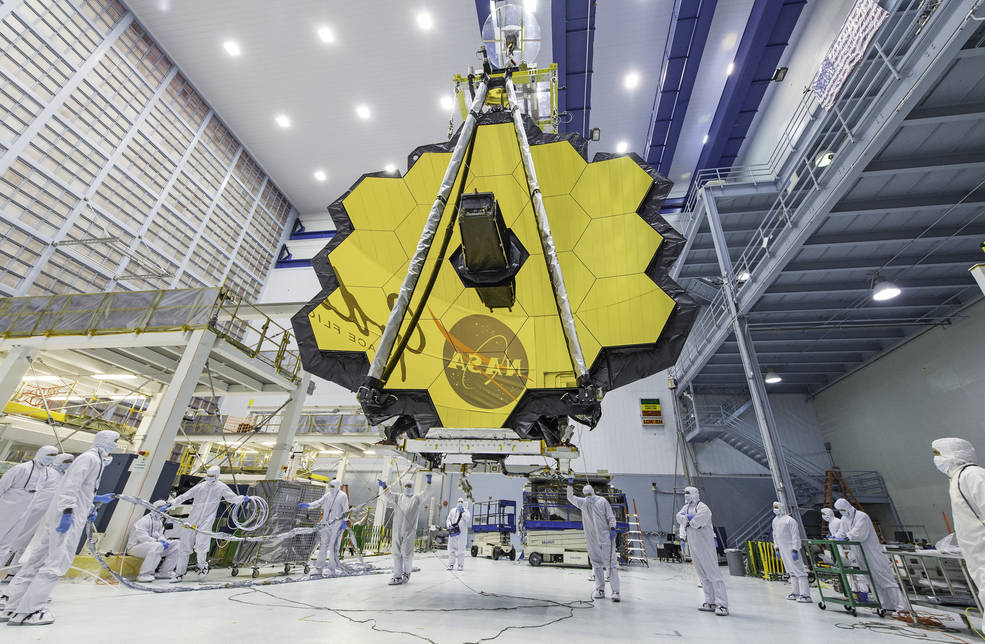
Craveology Cafe and the North Star Science Store are temporarily closed for renovation.

On Feb. 3, NASA announced that the first photons had made their way through the James Webb Space Telescope. This moment marked another milestone in a decades-long effort to expand our view of the universe. I first encountered the Webb 11 years ago at the USA Science & Engineering Festival in Washington, D.C. There, under a sign that read “Seeing the First Light,” a group from NASA was sharing its dreams for the famed Hubble Space Telescope’s successor.
My family and I had spent hours moving among the hundreds of booths that had taken over the streets of the capital. When my kids moved on from their telescope encounter, I stepped back. As the sun set over the skyline, I couldn’t help but be inspired by the incredible collection of science education projects arrayed before me, each one surrounded by a crowd eager to engage. As a scientist and educator, I allowed myself a moment of pride in seeing the great work of the field. But that excitement was slowly replaced by unease.
I noticed that each project was isolated from its neighbor by an effectively impermeable canvas wall. The result was a collection of projects lined up together but working alone. I noticed that the scientists waiting to engage were separated (or protected) from the public by 6-foot folding tables. And most disturbingly, the crowds at each table assured that only those at the front were able to engage leaving many to crane their heads for a view or to lose interest and walk away.
What I saw mirrored the state of science education writ large. Rather than a system in which everyone is working together, we have teachers isolated in classrooms, out-of-school programs relegated to being enrichment, scientists without the skills or opportunities to connect. Worst of all, the communities we aim to serve are on the outside looking in, visiting but never finding a place at the table.
Eleven years and one new space telescope launch later, this image still holds. At a time when science is so prominent, too many people remain siloed in booths, separated by tables, or trapped at the back of the crowd. It is well past time to reframe how we think about science education.
We need to envision a system where each program, school and organization takes a collective action approach. We all need to spend as much time leveraging each other’s work as we do developing new work for ourselves. To this collaboration, we need to add our region’s scientists and engineers. They can no longer reside isolated in academia but must be active participants in this new system. Most importantly this reframing needs to both include and center community. Science is best viewed not as something to be taught or brought to anyone, but as a response to the questions we pose.
Science should be part of and owned by (rather than shared with) all of San Diego — and that means communities must play a central role in the STEM education systems that exist to serve them. San Diego has the collaborative spirit and resources needed to realize a science education system that makes use of the collective efforts of all STEM providers, leverages the expertise and passion of scientists, and centers our communities. It won’t even necessarily require us to change what we are doing. Rather, it means changing how we are doing it.
At the Fleet Science Center, this has meant changing from being a museum in Balboa Park to being a countywide organization. It means working with over 300 STEM nonprofits, schools and businesses to leverage our collective efforts through the San Diego STEM Ecosystem. It means not just reaching out to scientists to advise us on content but providing science communication training and programs that make it easy for experts to play their part. First and foremost, it means putting community goals and aspirations at the core of our work by building relationships in neighborhoods from San Ysidro to Escondido, not as customers we bring science to but as collaborators with whom we co-develop community-centered programming that matters.
In just a few months, the James Webb Space Telescope will be ready to begin exploring the universe, representing the work of countless individuals acting as one. No less of a collective effort will be required to ensure that we can all make sense of what we will see. Realizing a San Diego where everyone is connected to the power of science will require all of us to work not alone, but together.
Published on the Opinion page of the San Diego Union-Tribune on Monday, February 21, 2022.